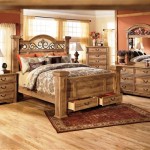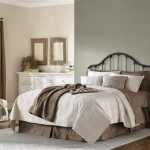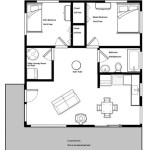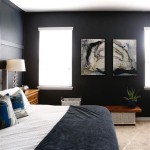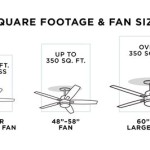```html
Making The Most Of A Small Bedroom
Maximizing space in a small bedroom requires careful planning and a strategic approach to furniture selection, storage solutions, and overall layout. A well-designed small bedroom can be both functional and aesthetically pleasing, providing a comfortable and relaxing environment despite its limited square footage. The focus should be on creating an illusion of spaciousness while ensuring all essential needs are met.
Effective small bedroom design often involves a multi-faceted approach, considering both structural elements and decorative details. Color palettes, lighting, and textiles play significant roles in enhancing the perceived size of the room. Smart furniture choices that offer dual functionality or utilize vertical space can further contribute to a more organized and efficient use of the area.
Optimizing Furniture Selection
Furniture selection is paramount in maximizing the usability of a small bedroom. Bulky or oversized pieces can quickly overwhelm the space, creating a cluttered and cramped feeling. Instead, prioritizing streamlined furniture with smaller footprints and incorporating multi-functional designs are essential for creating a more open and airy atmosphere.
One of the most impactful furniture choices is the bed. Consider alternatives to a traditional bed frame, such as a platform bed or a bed frame with built-in storage. Platform beds, lacking a bulky box spring, sit lower to the ground, creating an illusion of higher ceilings. Beds with integrated drawers or shelves underneath provide valuable storage space for clothing, linens, or other personal items, freeing up room in other areas of the bedroom.
Instead of bulky nightstands, opt for wall-mounted shelves or floating bedside tables. These options take up minimal floor space while still providing a convenient surface for lamps, books, and other bedside essentials. Wall-mounted options also create a sense of openness underneath, further contributing to the feeling of spaciousness.
When choosing a dresser, consider a tall, narrow model rather than a wide, low one. A vertical dresser utilizes vertical space effectively, providing ample storage without consuming a large footprint on the floor. Alternatively, explore drawer organizers or closet systems to maximize storage capacity within existing closets, potentially eliminating the need for a dresser altogether.
Avoid over-furnishing the room. Only include essential pieces that are truly necessary for daily living. A minimalist approach to furniture selection will prevent the room from feeling overcrowded and allow for easier movement and navigation.
Implementing Smart Storage Solutions
Effective storage solutions are critical for maintaining organization and maximizing space in a small bedroom. Without adequate storage, even the most well-designed small bedroom can quickly become cluttered and disorganized. Focus on utilizing unconventional storage areas and maximizing the functionality of existing spaces.
Take advantage of vertical space by installing shelves that extend to the ceiling. These shelves can be used to store books, decorative items, or even clothing in decorative boxes or baskets. High shelves not only provide storage but also draw the eye upward, making the room feel taller and more spacious.
Consider using storage containers under the bed. Flat, shallow containers can be easily slid under the bed to store out-of-season clothing, extra linens, or other items that are not frequently used. These containers keep items organized and out of sight, freeing up valuable space in closets and dressers.
Over-the-door organizers are another effective storage solution for small bedrooms. These organizers can be used to store shoes, toiletries, or accessories, maximizing the space behind the door which often goes unused. Clear pockets allow for easy visibility and access to stored items.
Utilize wall space by installing hooks for hanging clothing, bags, or accessories. Hooks are a simple and inexpensive way to create extra storage without taking up any floor space. Arrange hooks strategically to create a visually appealing and functional storage system.
Consider investing in multi-functional storage furniture, such as a storage ottoman or a bench with built-in storage. These pieces provide seating while also offering hidden storage space for blankets, pillows, or other items.
Creating the Illusion of Spaciousness
Beyond furniture and storage, several design techniques can be employed to create the illusion of spaciousness in a small bedroom. These techniques focus on manipulating light, color, and visual perception to make the room feel larger and more open than it actually is.
Light colors reflect light, making a room feel brighter and more spacious. Opt for light and neutral wall colors, such as white, cream, or light gray. These colors will maximize the amount of natural light in the room and create a more airy atmosphere. Avoid dark or saturated colors, which can make a small room feel even smaller and more enclosed.
Mirrors are powerful tools for creating the illusion of spaciousness. Strategically placed mirrors can reflect light and visually double the size of the room. Consider placing a large mirror on a wall opposite a window to maximize the reflection of natural light. A full-length mirror on a door can also create the illusion of depth and make the room feel larger.
Maximize natural light by keeping windows uncovered or using sheer curtains that allow light to filter through. Avoid heavy drapes or blinds that block natural light. Natural light can significantly enhance the feeling of spaciousness in a small room.
Use vertical stripes to visually elongate the walls and make the room feel taller. Vertical stripes can be incorporated through wallpaper, curtains, or even painted accent walls. Avoid horizontal stripes, which can make the room feel wider but also lower the ceiling.
Minimize clutter and keep the room organized. Clutter can make a small room feel even smaller and more chaotic. Regularly declutter and organize the room to maintain a sense of order and spaciousness. This includes keeping surfaces clear of unnecessary items and storing belongings in designated locations.
Choose furniture with exposed legs to allow more light to flow underneath, contributing to a lighter and more open feel. Sofas, chairs, and even beds with visible legs will create a sense of airiness compared to those that sit flush with the floor.
The size of the rug can also affect the perception of space. A large rug that covers most of the floor can make the room feel larger than a small rug that leaves a significant portion of the floor exposed. However, avoid using a rug that is too large, as it can overwhelm the space.
The placement of artwork and accessories can also impact the feeling of spaciousness. Avoid overcrowding the walls with too many pictures or decorations. Instead, choose a few carefully selected pieces that complement the overall design and create a focal point.
Ultimately, making the most of a small bedroom is a matter of prioritizing functionality, optimizing storage, and employing design techniques to create the illusion of spaciousness. By carefully considering these factors, individuals can transform a small bedroom into a comfortable, stylish, and functional living space.
```
18 Small Bedroom Ideas How To Make Your Room Look Bigger Extra Space Storage

10 Tips To Make A Small Bedroom Look Great

8 Small Bedroom Design Ideas To Make The Most Of Your Petite Space Bed Threads

How To Make A Small Bedroom Look Bigger 50 Clever Tips

A Simple Guide How To Make The Most Of Small Spaces Catesthill Com

13 Ways To Make The Most Of A Small Bedroom

20 Tiny Bedroom S Help You Make The Most Of Your Space Woohome

How To Make The Most Of Your Small Bedroom Space John Ryan By Design

How To Make The Most Of A Small Bedroom Welsh Mum One

13 Small Bedroom Ideas How To Make The Most Of Your Space English Home

